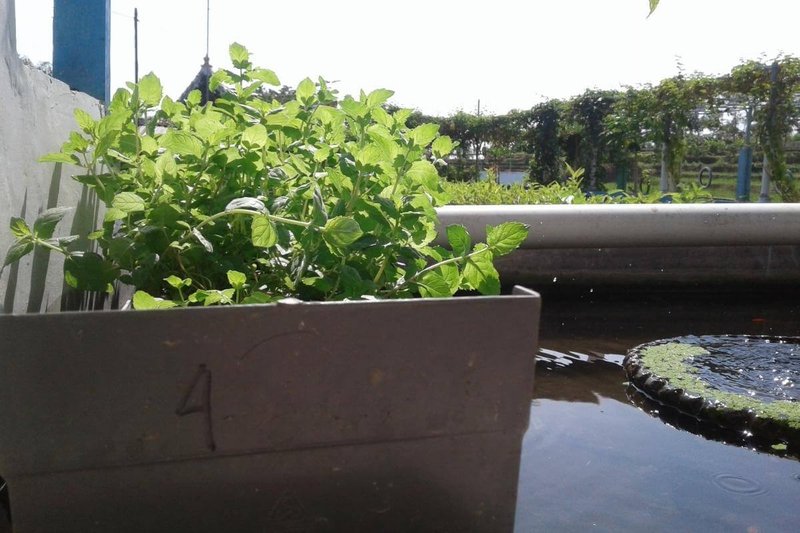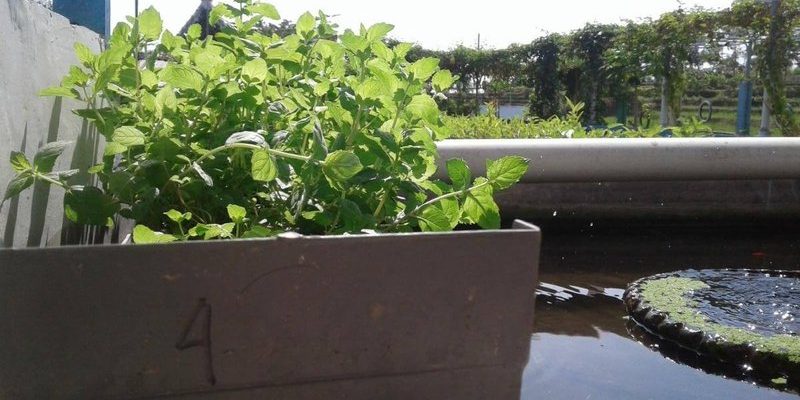
Now, to put it in simpler terms: imagine you’re setting up a delightful mini-farm that grows fresh veggies and fish without needing to constantly fuss over them. Earthworms can help keep this little world thriving. They break down organic matter and enrich the soil, which can enhance the growth of your plants. Let’s dive deeper into how earthworms can contribute to this sustainable method of farming.
Understanding Aquaponics
Before exploring the role of earthworms, it’s crucial to understand what aquaponics is all about. At its core, aquaponics combines aquaculture (raising fish) and hydroponics (growing plants in water). Instead of using soil, plants grow in a nutrient-rich water solution that’s also home to fish.
The magic happens through a symbiotic relationship. Fish produce waste that serves as organic fertilizer for plants. In return, plants filter and clean the water for the fish. It’s a delicate balance, much like a well-choreographed dance. This system is not only eco-friendly but also highly efficient in producing food.
Why Earthworms Fit Into the Picture
Here’s the thing: while aquaponics systems already have a built-in nutrient cycle, introducing earthworms can enhance this process even further. Earthworms naturally break down organic matter, like leftover fish food and plant debris, turning it into rich compost. This compost, called worm castings, provides essential nutrients that help your plants flourish.
Additionally, earthworms aerate the soil when they burrow, promoting better water drainage and root growth. Imagine your plants getting a cozy, nutrient-packed bed for their roots to spread out and thrive. The combination of fish, plants, and earthworms creates a harmonious ecosystem, allowing each component to support one another.
Types of Earthworms to Consider
Not all earthworms are created equal when it comes to aquaponics. Some types work better than others. Here are a few popular choices:
- Red Wigglers: These are the rock stars of composting. They love breaking down organic materials and thrive in rich compost.
- European Nightcrawlers: Known for their size and appetite, these worms are great for both composting and aerating. They can handle a variety of kitchen scraps.
- African Nightcrawlers: These worms are larger and can eat more waste, making them efficient composters in aquaponics.
Ultimately, the best choice depends on your setup and what you’re planning to grow. Think about your local climate and the kind of organic waste you’ll have, as this can guide your decision.
How to Incorporate Earthworms in Your Aquaponic System
You might be wondering how to set the stage for these tiny wrigglers in your aquaponics system. It’s not as daunting as it may seem! Here’s a simple step-by-step guide:
1. **Choose a Worm Bed:** Create a separate space for your worms, like a worm bin or a composting area. This keeps them safe and allows you to manage their needs easily.
2. **Add Organic Matter:** Feed your earthworms kitchen scraps, such as vegetable peels or leftover fish food. Just make sure not to overfeed!
3. **Monitor Conditions:** Ensure that the temperature and moisture levels are just right. Earthworms prefer dark, moist environments. If it’s too dry, they can become inactive—definitely not what you want in your aquaponic system!
4. **Harvest the Castings:** Over time, your worms will produce nutrient-rich castings. You can add these to the grow beds in your aquaponics system to boost plant health.
Keeping this routine going can help your aquaponics setup thrive while also minimizing waste from your kitchen.
The Benefits of Using Earthworms in Aquaponics
Integrating earthworms into your aquaponic system has several advantages:
– **Enhanced Nutrient Availability:** Worm castings are rich in nutrients like nitrogen, phosphorus, and potassium. These feed your plants in a way that is more accessible than other fertilizers.
– **Improved Soil Structure:** Earthworms help aerate the substrate, allowing roots to access oxygen and water more efficiently. Healthy roots lead to healthier plants!
– **Natural Pest Control:** A thriving earthworm population can contribute to pest management. Their presence can sometimes deter harmful pests, reducing the need for chemical interventions.
– **Sustainability:** By recycling kitchen scraps and organic waste, you’re contributing to a sustainable ecosystem. It’s like having a mini recycling program right in your backyard.
Common Challenges and Solutions
While it may sound like a dream, incorporating earthworms into your aquaponics system can come with its own set of challenges. Here are a few common issues and how to tackle them:
– **Overpopulation:** If you notice too many worms, they may stress the system. To fix this, consider dividing your worm population between multiple bins or giving some away to gardening friends.
– **Water Quality:** Earthworms are sensitive to water pH and ammonia levels. Regularly check the water quality in your aquaponics system to ensure it’s safe for both fish and worms.
– **Feeding Balance:** Striking a feeding balance is essential. Don’t let the organic matter pile up and rot; that could lead to unwanted bacteria. Regularly harvest or add the castings to the system to keep everything fresh.
By being mindful of these factors, you can create a thriving ecosystem where earthworms, fish, and plants all contribute to each other’s success.
Final Thoughts
Earthworms bring a wealth of benefits to aquaponic systems. From enriching the nutrients available for plants to improving soil structure, these wriggly critters offer a lot more than meets the eye. If you’re setting up or currently managing an aquaponics system, consider adding earthworms to your strategy. It’s a natural way to enhance growth, reduce waste, and create a beautiful, sustainable mini-ecosystem right at home.
In the end, creating a successful aquaponics system is all about balance. By introducing earthworms, you’re not just improving the health of your plants; you’re also nurturing a vibrant, interconnected community of life. And honestly, there’s something pretty magical about that!

